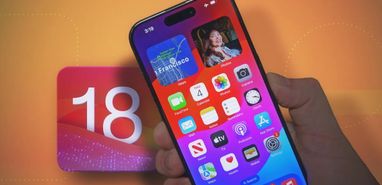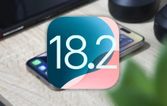
iOS 18 Preview: Exploring the Latest Update from Apple
For the time being, the most recent iPhone update offers more customization and further improved native applications.
iOS 18 has arrived in public beta, giving users more control over their iPhone’s layout. However, Apple Intelligence, the most anticipated upgrade, is notably missing.
The update enhances several native applications such as Photos, Messages (RCS! Gasp!), and Notes, although Apple Intelligence will add even more features and tricks in the future. While we all hope for the ability to create our own emojis, there is still much to explore in this update. It feels a bit less exciting than what Apple teased at WWDC.
You can access the iOS preview by enrolling on Apple’s website, which will nudge the beta to your iPhone’s Software Update section. As always, back up your iPhone first and ensure it’s compatible. (iOS 18 works on 2018’s iPhone XS and XR and newer phones.)
iOS 18 Brings More Customization

Beyond app folders and widgets, iOS 18 adds further functional and aesthetic customization. Alongside a new Dark Mode, you can tint all elements in a color of your choosing. Unlike previous dark modes on iOS, this time it also dims individual app icons to keep them consistent with the darker theme. You can also have iOS choose the color for you, basing its recommendation on your iPhone’s wallpaper. If that sounds familiar, it’s because it is very similar to Material You, which Google introduced to Android in 2021.
You can also increase the size of the app icons slightly without reducing the number you can pack into a single pane. This strips away the text labels, so you need to be sure you recognize each app icon without words. Moreover, you can now move your icons outside the left-aligned, top-to-bottom snap grid. Want the Safari icon floating in the bottom right corner? You can do that now.
iOS 18 also introduces two new ways to secure your apps: locking or hiding them. Locking an app will require FaceID access, useful for Photos or other sensitive apps if you often share your phone with children. This will also prevent information from these apps from appearing in searches and notifications. Alternatively, you can hide the app, moving it into a dedicated folder secured by FaceID.
Apple has also revamped its control panel and dropdown menu for settings. Similar to when iOS introduced widgets a few years ago, there is now a dedicated control gallery to add smart home shortcuts, launch timers, and more.
This could clutter the control panel, but Apple has divided this into four different tabs. You can tap on the icons to leap to a specific section or access all of them in a single continuous scroll. Your most-used features can live at the top, with other sections organizing smart home controls, entertainment playback, and connectivity. Have you lost your hotspot shortcut? It’s here. All the controls are also resizable to prioritize the most crucial ones.
Finally, you can now customize the iOS lock screen controls too. If you never use the flashlight, you can swap it for something more practical, like a timer, or even a shortcut to Shazam in a pinch.
Messages

RCS (Rich Communication Services) has landed on the iPhone, or at least on those running iOS 18. It combines advanced text features like support for richer images, larger file attachments, voice notes, group chat, read receipts, and more. However, since you already get all these through iMessage on iOS, RCS may not seem very exciting.
However, if your friends are split between Android and iOS, you can start using Messages like other third-party messaging apps. Does it have all the features of WhatsApp? No. Does it do everything iMessage does? No.
But it will help. For instance, with RCS, you can send messages over Wi-Fi without a phone signal. I’ve had issues before when running late for appointments, trapped on the metro with no signal, unable to text to let the other person know. RCS means those messages will send if you connect to a passing Wi-Fi network.
There are more advances beyond RCS. You can also schedule text messages, similar to what you might do on work chat apps and email. If you’re into Apple’s recently introduced message tapbacks (emoji reactions), you can now do so with any emoji, including your own Live Stickers based on your photos and images. For even more expression, iOS 18 also adds italics, bold, underline, and strikethrough formatting, along with a family of cute word animations that feel like WordArt come to life. It’s silly, it’s frothy, it’s pointless. I love it.
Photos

Apple has introduced major changes to how it structures its Photos app, reflecting the fact that many of us have had iPhones (and photo libraries) for over a decade and a half. We’re not going to look at all of those pictures. We’re likely not even going to look at most of them. In iOS 18, Apple has removed the tabs for “Library,” “For You,” “Albums,” and “Search.” Instead of your latest photos, screenshots, and videos taking up most of the screen, you’ll see some space carved out for your latest content, curated albums, memories, and more.
It’s a divisive approach, but your reaction will depend on how you interact with your photos. I know where my favorite photos are or how to find them, but other people in my life are often pleasantly surprised when services and devices can auto-curate an album of photos from a day out or a vacation. This redesign seems aimed at them.
And what about Apple Intelligence? Eventually, it will add some additional tricks, like Cleanup, which can help erase any unwanted objects in your photos. It’s a feature that Pixel (and Galaxy) phone users have enjoyed for a while, and we await the arrival of Apple Intelligence to test this. For more on what’s coming to your gallery in iOS 18, check out my colleague Cherlynn’s detailed article on what Apple’s done to the Photos app.
More iOS 18 Highlights
If you’re a daily Notes app user (yes, I’m guilty), there are some nice advances in iOS 18, too. You can now transcribe conversations and meetings directly into the app. At the time of my testing, you’ll have to ensure your iPhone is set to US English and US as a region for the transcription icon to appear.
We also get Math Notes, which can be accessed through the Notes app and from the calculator. Here, you can write out sums and calculations, and your iPhone will solve them. It’ll even remember figures for future calculations. It feels niche, but there’s some definite utility here, perhaps if you’re looking to add up a vacation budget or DIY project.
Notes’ new collapsible subheadings proved more useful for me. I have several lengthy Note files, and now I can organize them better and not have to search for specific words to find what I need.
Apple brings a similar approach to its Reader on Safari, which can add a table of contents and even attempt to summarize an article before you get your teeth into it. Meandering recipe intros: you may have been put on notice. However, as of this writing, I haven’t been able to test this on any sites I’ve visited.
There’s also a new Passwords app, which, in many ways, is just an easier way to access your iCloud passwords instead of diving into your iPhone’s settings. The app divides your passwords into different categories like accounts, codes, Wi-Fi networks, and Passkeys, and will support the iCloud for Windows app and a Chrome extension. You can also share password collections with visitors, friends, or family.
Apple continues to tentatively develop its smart home features within iOS 18, too. It’s adding express mode to automatically unlock connected doors as you approach — as long as you have your iPhone (or Apple Watch) on you. Meanwhile, Apple has created a guest access tab so you can grant access to parts of your smart home and even schedule the times a garage door, for instance, stays unlocked, perhaps for a package delivery.
Wrap-Up
My initial impressions of iOS 18 are more limited than I wanted them to be. Apple Intelligence and most of its exciting features teased at WWDC are not part of this public beta. Without those, iOS 18 feels more like iOS 17.5. There are more features, but most of them are incremental.
RCS is finally here, adding more functionality to cross-OS text messaging (and possibly worrying the likes of WhatsApp) while elsewhere, Apple focuses on upgrading and enhancing its native apps. The company made some interesting choices. In iOS 18, even Calculator is getting beefed up, with Math Notes, calculation history, and a new scientific calculator view.
The public beta is relatively stable, so it’s easy to recommend to those looking for early access to the latest iPhone features. However, without Apple Intelligence, drawing more meaningful conclusions on iOS 18 will have to wait.







By Andrej Kovacevic
Updated on 19th July 2024